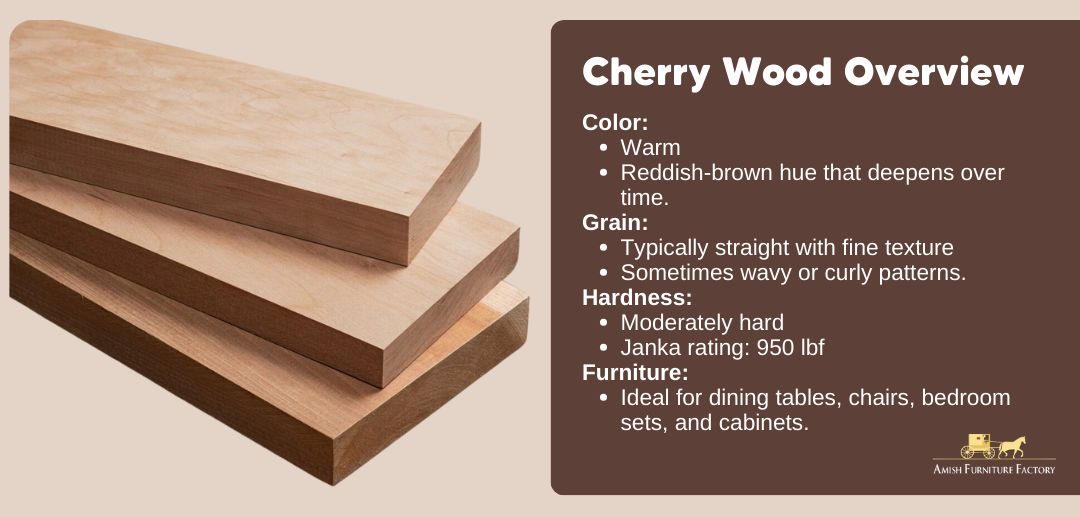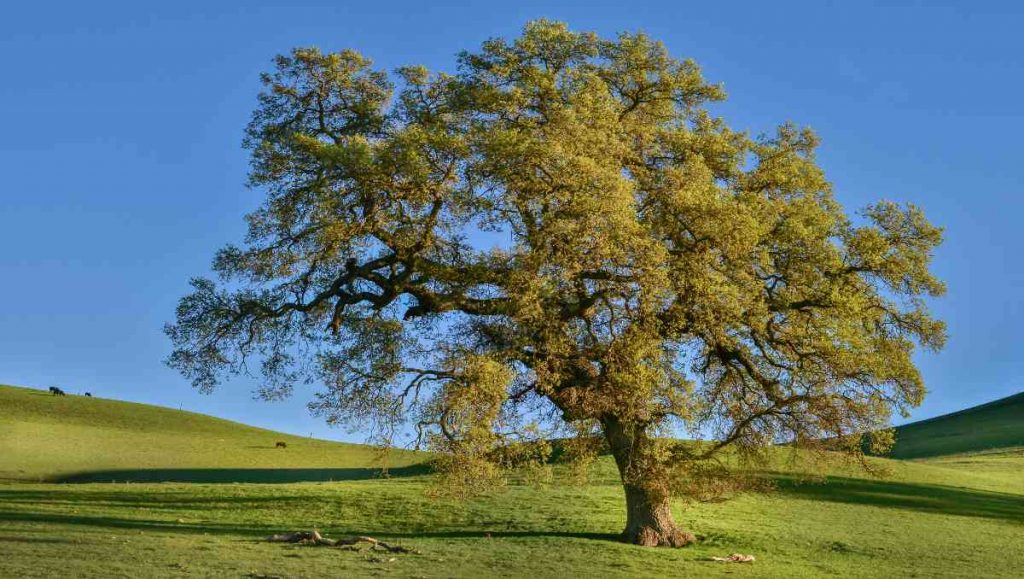
When it comes to crafting exquisite furniture or designing a warm and inviting interior, the choice of wood plays a pivotal role. Among the myriad of options available, cherry and oak stand out as two of the most popular and versatile choices. Each possesses its own unique characteristics, from color and grain patterns to durability and aging properties.
Key Takeaways
- Cherry and oak are both popular and versatile wood choices with distinct characteristics.
- Cherry wood is celebrated for its rich, reddish-brown hue that deepens over time, offering a smooth and elegant appearance ideal for sophisticated furniture and interiors.
- Oak wood features a range of colors from light tan to golden brown, with prominent grain patterns that contribute to a more traditional and textured look.
This guide discusses the distinctive qualities of cherry and oak, exploring their strengths, weaknesses, and ideal applications.
Understanding Cherry Wood
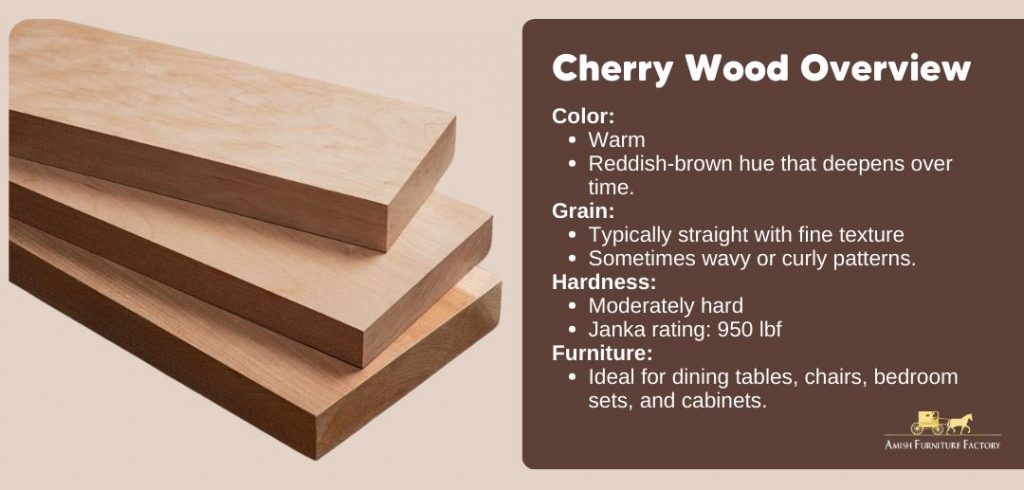
The cherry tree, primarily found in North America, is cultivated with care and sustainability, ensuring its longevity. These trees require decades to reach maturity, making responsible management crucial for a consistent supply.
From these trees comes the prized cherry wood, recognized for its warm, reddish-brown hue that deepens over time. Its smooth, straight grain occasionally displays subtle waves or curls, adding to its visual appeal. As it ages, cherry wood develops a lustrous patina, enhancing its beauty.
Cherry wood is favored by woodworkers for its ease of use. Its smooth texture and moderate density make it easy to carve, stain, and finish. It also polishes to a high shine. With a Janka hardness rating of 950 lbf, cherry wood is moderately hard, resisting dents and scratches while maintaining stability, reducing the risk of warping or cracking.
A Look at Oak Wood
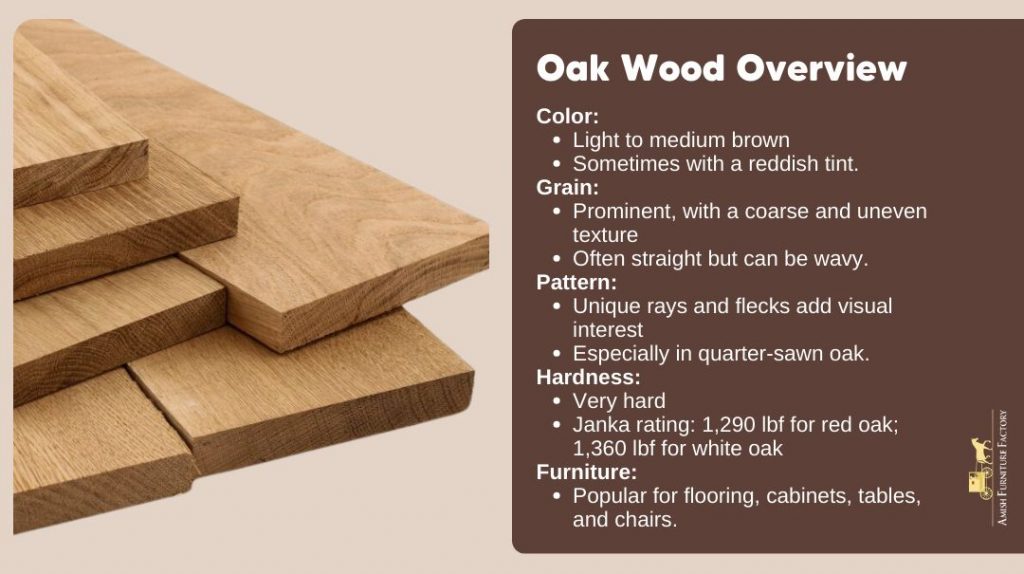
The oak is revered for its strength and longevity. This mighty tree, often reaching impressive heights and boasting a broad canopy, has been a symbol of power and resilience across cultures for centuries. Its distinctive leaves, with their characteristic lobes, are instantly recognizable features. The oak’s deep root system anchors it firmly, allowing it to withstand storms and harsh conditions.
From this steadfast giant comes the prized oak wood. The color of oak wood varies from a light tan to a rich golden brown, depending on the specific type of oak and its growing conditions. It showcases distinctive grain patterns, with rays and rings that lend a unique texture to its surface. While oak doesn’t undergo dramatic color changes like cherry wood, it develops an attractive patina over time.
Oak wood is dense and sturdy, characterized by a coarse texture that necessitates sharp tools for woodworking. With a Janka hardness rating between 1290 and 1360 lbf, oak is significantly stronger and harder than cherry wood, making it highly resistant to dents and scratches.
Cherry and Oak: A Comparison
Both cherry and oak offer unique visual appeal. Here’s a comparison to help you decide.
Aesthetic Appeal
Cherry wood’s warm, reddish-brown tones and smooth grain create an inviting and elegant ambiance. Oak, on the other hand, showcases a range of colors from light tan to rich golden brown, often with prominent grain patterns that add depth and texture.
Durability and Maintenance
Both cherry and oak are durable woods, but oak’s superior hardness and density give it an edge in terms of longevity. Oak furniture and flooring can withstand heavy use and foot traffic for generations with proper care. Cherry wood, while still resilient, requires a bit more attention to prevent dents and scratches.
Cost and Availability
Both cherry and oak are readily available in the market, but their prices can vary depending on the species, grade, and region.
- Cherry: Typically ranges from $6 to $15 per board foot.
- Oak: Generally ranges from $3 to $10 per board foot.
While oak is generally more abundant and therefore slightly less expensive than cherry, premium grades of both woods can command higher prices. The specific type of oak or cherry also plays a role in price, with rarer varieties often fetching a premium.
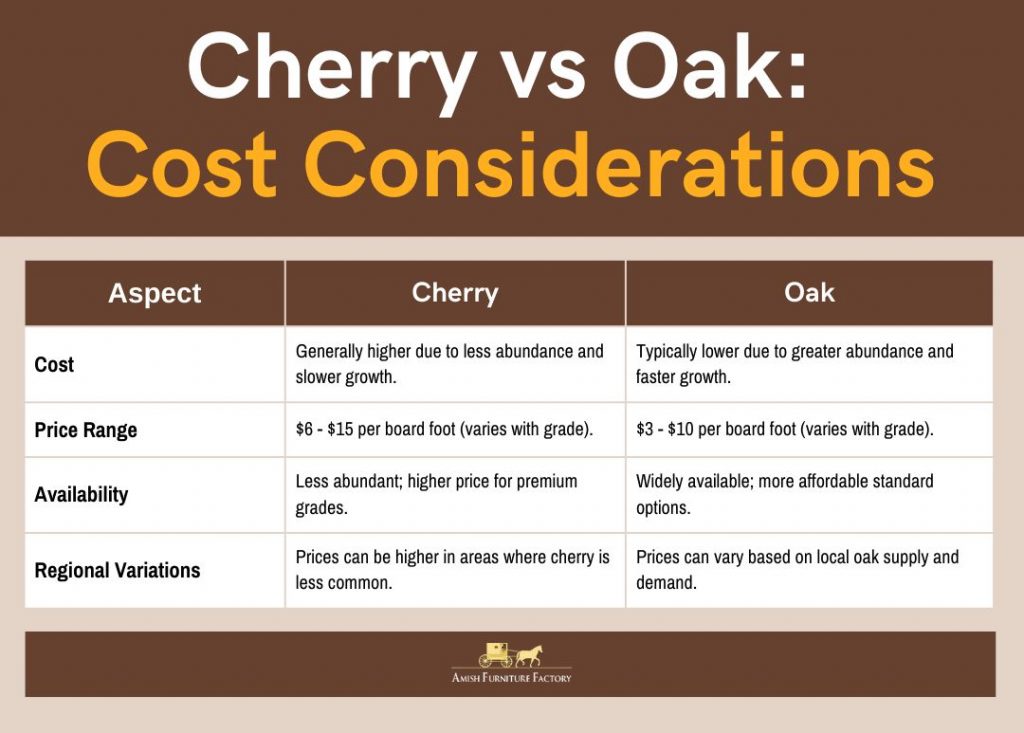
Environmental Impact
Both cherry and oak can be sustainable choices when sourced from responsibly managed forests. Oak’s abundance and faster growth rate compared to cherry give it a slight advantage in terms of sustainability. However, choosing wood from certified sources, regardless of species, supports sustainable forestry practices and minimizes environmental impact.
Whether you choose the warmth of cherry or the strength of oak, elevate your living space with a handcrafted Amish coffee table, a timeless addition to any décor.
Practical Considerations for Buyers
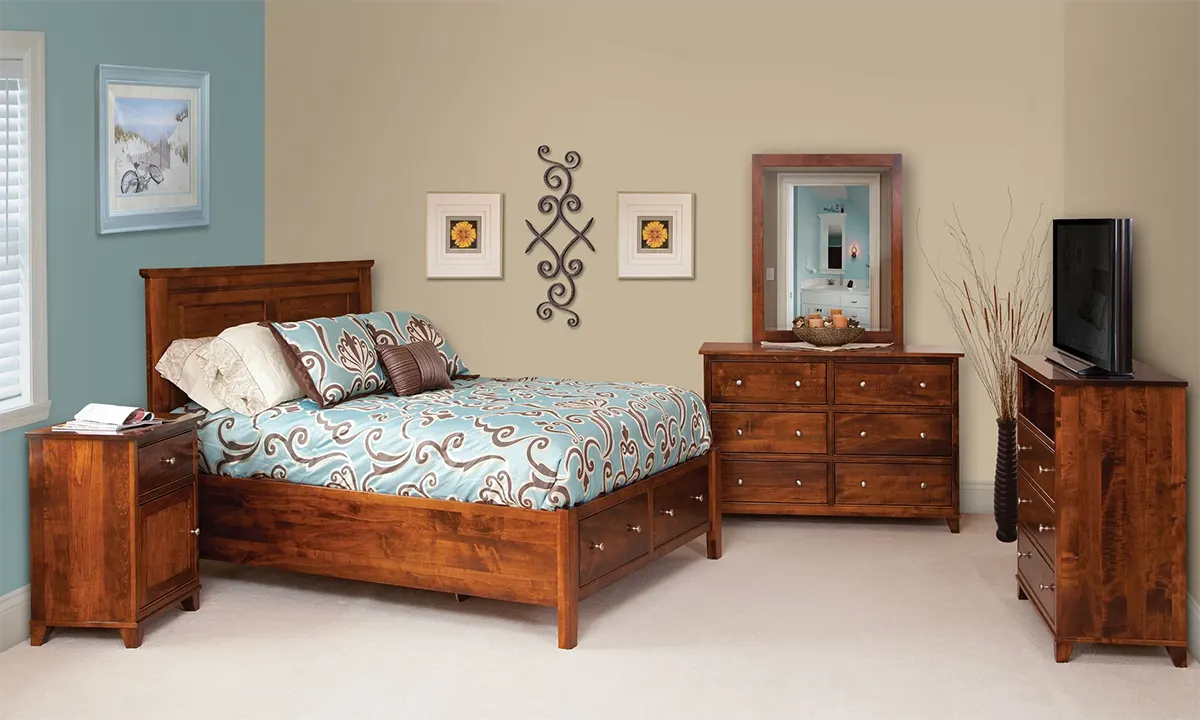
When choosing between cherry and oak for your project, several practical considerations can help guide your decision-making process. These include:
- Budget: Oak tends to be slightly more affordable than cherry, but prices can vary depending on the specific grade and availability.
- Style and Aesthetic Preferences: Consider the overall style and aesthetic you want to achieve.
- Durability and Maintenance Requirements: Evaluate the level of durability and maintenance you require.
- Environmental Concerns: Choose wood from certified sources that adhere to responsible forestry practices.
- Availability and Sourcing: Check the availability of both woods in your region. Oak is generally more abundant than cherry, but certain grades or species may be limited.
- Personal Preferences: Consider the color, grain patterns, and overall aesthetic appeal that resonates with you.
The Final Verdict
Choosing between cherry and oak is a delightful dilemma, as both woods offer unique characteristics that can elevate any project. By understanding the distinctive qualities of each wood, you can make an informed decision that reflects your personal preferences and project goals. Whether you opt for the timeless elegance of cherry or the enduring strength of oak, you can be assured that you are investing in a natural material that will enhance the beauty and functionality of your space for years to come.
FAQs
Can cherry and oak wood be used together in the same project?
Absolutely! Combining cherry and oak can create stunning visual contrasts and add depth to your design. For instance, you could use cherry for cabinetry and oak for flooring, or incorporate oak accents into a predominantly cherry wood furniture piece.
How do I care for cherry and oak wood to maintain their beauty?
Regular dusting and cleaning with a damp cloth are essential for both woods. Avoid harsh chemicals or abrasive cleaners. Occasionally, apply a wood polish or wax to protect the surface and enhance its luster.
Can I refinish cherry or oak wood if it gets damaged or worn?
Yes, both cherry and oak can be refinished to restore their original beauty. Sanding down the surface and applying a new stain or finish can remove scratches, dents, and other signs of wear. However, it’s recommended to seek professional help for extensive refinishing projects.
